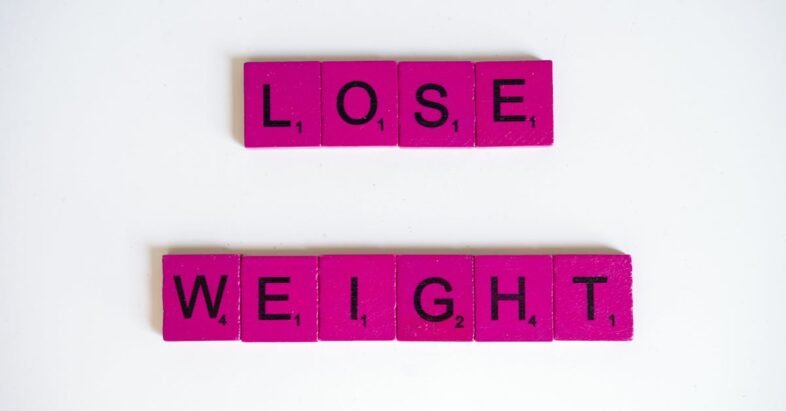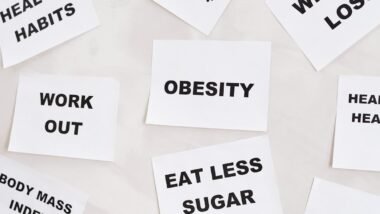Meal Planning for Success
Successful weight loss relies heavily on a well-structured meal plan. This plan should include a variety of foods that provide essential nutrients while also promoting a calorie deficit. Planning meals in advance helps control portion sizes and prevents spontaneous food choices that may lead to higher calorie intake. Incorporating lean proteins, whole grains, fruits, and vegetables is crucial. These food groups can nurture your body and keep you feeling satisfied throughout the day.
Creating a weekly grocery list based on your meal plan ensures you have everything you need on hand. Stocking up on healthy snacks can help curb cravings between meals. Preparing meals in batches can save time and keep you on track with your nutrition goals. When meals are prepped and ready, it becomes easier to resist the temptation of reaching for unhealthy options. This method fosters consistency, making it simpler to adhere to your plan.
Navigate to this website to learn more.
Sample Meal Ideas for a Week
Starting the week with a nutritious breakfast can set the tone for successful weight loss. Consider options like Greek yogurt topped with fresh berries and a sprinkle of granola. A vegetable omelet made with spinach, tomatoes, and a dash of feta cheese provides a protein-packed kick. For lunch, try a quinoa salad mixed with chickpeas, cucumbers, and a light vinaigrette. Packing snacks like carrot sticks or apple slices with almond butter can help curb cravings and maintain energy levels.
For dinner, grilled chicken breast served with steamed broccoli and a side of sweet potato is filling and balanced. Alternatively, a stir-fry featuring tofu and a variety of colorful vegetables offers a vibrant and satisfying meal. On the last day of the week, enjoy a refreshing bowl of mixed greens with sliced strawberries, walnuts, and a light balsamic dressing. Keeping meals varied and flavorful can make sticking to your plan much easier.
Monitoring Your Progress
Keeping track of your weight loss journey is essential for maintaining motivation and making necessary adjustments. Regular weigh-ins can provide insight into your progress, but it’s important to consider factors beyond just the number on the scale. Recording measurements of your waist, hips, and other areas can reveal changes in body composition that may not be reflected in weight alone.
Incorporating a food diary or weight loss app can enhance your monitoring process. Documenting meals and snacks allows for a better understanding of your eating habits. This practice helps identify patterns and triggers that could impact your weight loss efforts. Combining these methods ensures a comprehensive approach to tracking your progress effectively.
Effective Ways to Track Weight Loss
Tracking weight loss effectively requires consistency and the right tools. Many individuals find success using mobile apps designed for fitness and nutrition. These applications allow users to enter daily food intake and physical activities, providing a clear overview of calories consumed and burned. Regularly updating this information helps maintain focus and accountability. Additionally, some find keeping a physical journal beneficial for documenting meals, emotions, and workouts, which can reveal patterns that may contribute to weight loss or hinder progress.
Another effective method involves weekly weigh-ins. Setting a specific day and time to step on the scale can help establish a routine. It’s important to remember that weight fluctuations are normal, so examining long-term trends rather than daily changes can provide a more accurate picture of progress. Taking measurements of body parts, such as the waist or hips, offers additional insight. Visual representations, like progress pictures, can serve as motivating reminders of the journey taken and the commitment to health.
Dealing with Plateaus
Experiencing a plateau can be frustrating, especially when you’ve committed to significant lifestyle changes. It often occurs when the body adapts to a new routine, slowing metabolism and making weight loss more challenging. To break through this stagnation, consider adjusting your caloric intake or diversifying your workout routine. Incorporating different types of exercises like strength training, high-intensity intervals, or even activities like yoga can stimulate new results.
Another effective approach involves reassessing your current food choices. Sometimes, hidden calories in snacks or beverages can accumulate and hinder progress. Tracking your daily intake more meticulously can reveal areas for improvement. Staying hydrated and ensuring adequate sleep can also play pivotal roles in overcoming these plateaus. A fresh mindset and patience are essential during this phase, as temporary setbacks are a common part of any weight loss journey.
Strategies to Overcome Weight Loss Stagnation
Weight loss plateaus can be frustrating, but they are a common part of the journey. A change in routine can often reset your progress. This might mean varying your workouts or incorporating different types of physical activity. Changing the intensity or duration of your exercises can help stimulate your metabolism. Additionally, consider adjusting your caloric intake. Sometimes, revamping your meal plan can reignite healthy habits and encourage weight loss.
Mindful eating is another strategy to break through stagnation. Focusing on portion sizes and the nutritional quality of foods can enhance your results. Keeping a food journal may help you identify patterns in your eating habits. Staying hydrated also plays a crucial role in weight management. Ensuring you drink enough water can improve metabolism and reduce hunger cues, aiding in the overall weight loss process.
FAQS
Is it safe to lose 10 pounds in just 7 days?
While rapid weight loss can be tempting, losing 10 pounds in a week may not be safe or sustainable for everyone. It’s important to prioritize your health and consult with a healthcare professional before starting any aggressive weight loss plan.
What types of foods should I include in my meal plan?
Focus on incorporating whole foods such as lean proteins, fruits, vegetables, whole grains, and healthy fats. Avoid processed foods, sugary drinks, and excessive carbs to help promote weight loss.
How can I track my weight loss progress effectively?
Utilize methods such as keeping a food diary, using weight loss apps, or taking weekly measurements of your waist and body fat percentage. Regular weighing can also help, but remember that daily fluctuations are normal.
What should I do if I hit a weight loss plateau?
If you experience a plateau, try changing your workout routine, adjusting your calorie intake, or incorporating more strength training. Also, ensure you’re staying hydrated and getting enough sleep, as these factors can impact weight loss.
Are there any exercises I should focus on to help lose weight quickly?
Incorporate a mix of cardiovascular exercises like running, cycling, or swimming along with strength training. High-intensity interval training (HIIT) is also effective for burning calories and boosting metabolism.
Related Links
hacks to lose weight quickly
Can you lose 30 pounds in a month?
Round up of the most effective quick weight loss diets of 2023


